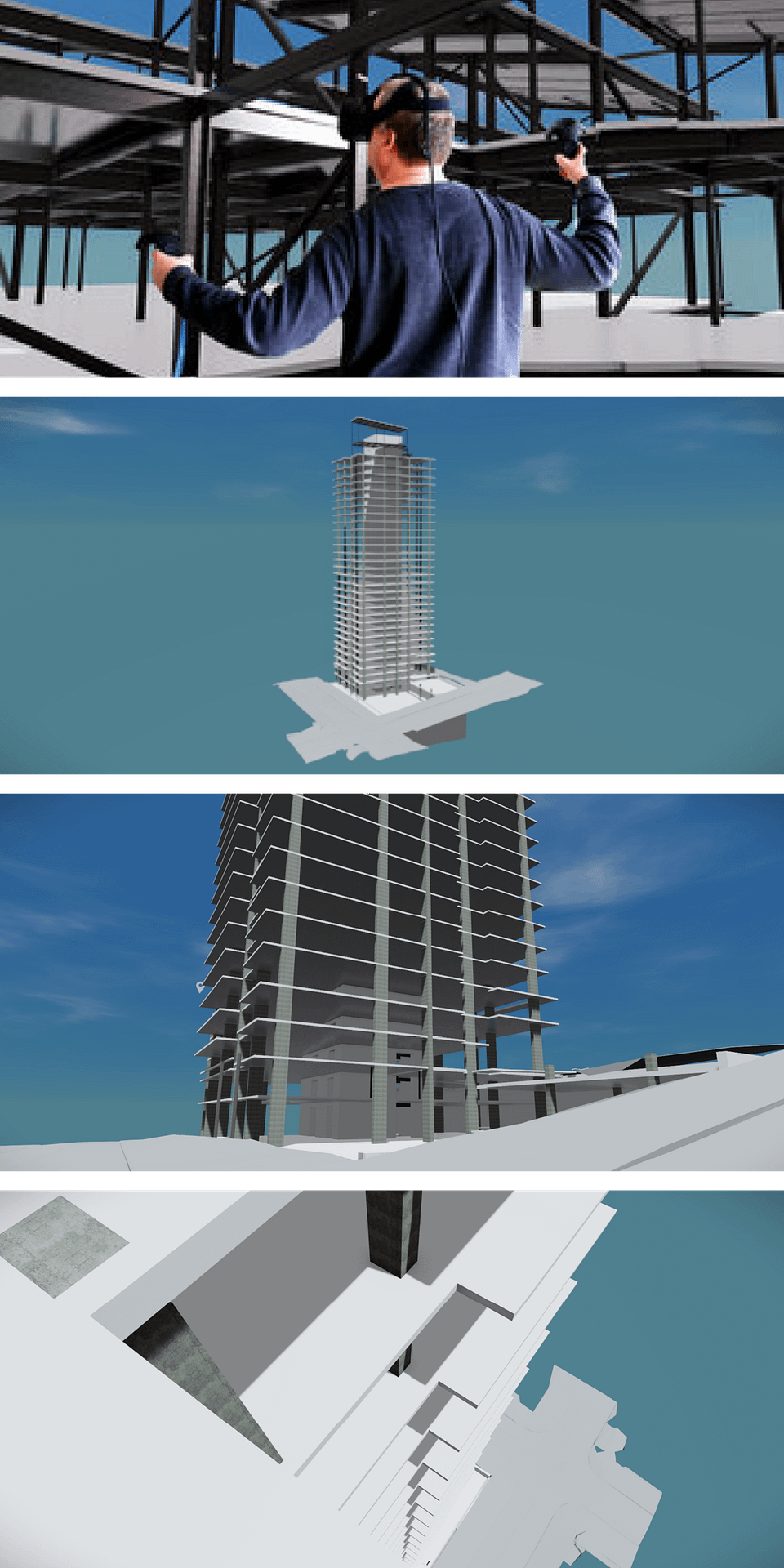Virtual reality is gaining traction.
Reasonably-priced headsets are available at practically every wireless dealer and giants like Microsoft, Amazon, Cisco and Samsung continue to push the technology further and further. While historically VR was associated with gaming, today large brands are leveraging it for marketing campaigns, VR-based apps are integrated into our daily lives, and even AEC is feeling the effects.
As engineers, we’re pursuing virtual reality as a collaboration tool, creative solution and way to streamline the work we do each day.
Before diving into virtual reality’s effects on the AEC space, it’s important to understand the language surrounding VR and the distinctions between technology types. We’ve assembled a quick summary:
Virtual Reality Definition:
“An artificial environment which is experienced through sensory stimuli (as sights and sounds) provided by a computer and in which one’s actions partially determine what happens in the environment.” Which means the user is immersed in a pre-programmed digitized world delivered through the device. All a user has to do is wear the helmet or goggles to enter a different world waiting to be explored. It’s a completely separate and artificial world designed to change your reality and immerse you in it. Nothing is real and everything is virtual. Ex: Oculus Rift (You know, Facebook’s $2 billion baby? Basically, it pulls you into a virtual world.)
Augmented Reality Definition:
“An enhanced version of reality created by the use of technology to overlay digital information on an image of something being viewed through a device (as a smartphone camera).” Which means… augmented reality is a distinct layer living on top of the existing reality, not mixed into it. Ex: Yelp’s Monocle – A cell phone becomes the transmitting device, allowing users to see info about nearby businesses as they stroll), or the infamous Pokémon GO. Ex: Microsoft’s HoloLens – merges 3D holographic images with the real world, which Microsoft calls “holographic computing.”

